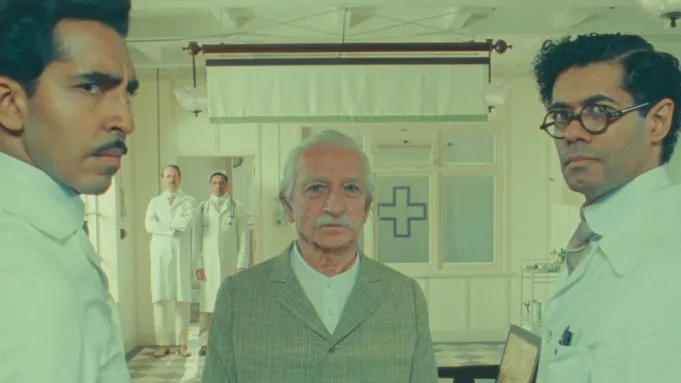Wes Anderson‘s distinct storytelling style merges seamlessly with Roald Dahl‘s whimsical world in the short film “The Wonderful Story of Henry Sugar.” Clocking in at 40 minutes, this adaptation of one of Dahl’s elaborate short stories offers a delightful cinematic experience.
With a star-studded ensemble that includes Ben Kingsley, Benedict Cumberbatch, Dev Patel, Richard Ayoade, and more, Anderson takes viewers on a journey through a narrative maze that pays homage to Dahl’s storytelling prowess. The film, set in Anderson’s signature head-on diorama style, is a testament to the magic that can happen when two creative sensibilities align.
READ MORE: Mads Mikkelsen Stars in the Stirring Drama The Promised Land as Denmark’s Heroic Bastion
“The Wonderful Story of Henry Sugar” begins with Ralph Fiennes portraying Roald Dahl himself, setting the stage in Dahl’s writing shed at Gipsy House, the author’s former residence. Anderson playfully acknowledges the artificiality of the project, hinting at the behind-the-scenes magic with a meta-textual nod.
Fiennes, in his dual role as Dahl and a London bobby, guides us into the heart of the story. The film is an intricately layered narrative, employing voiceovers that pass the storytelling baton among various characters. The tale unfolds as it dives deeper into the narrative rabbit hole.
At its core, the story follows Henry Sugar (Cumberbatch), a wealthy bachelor on a quest to amass more wealth. His discovery of a mysterious book titled “A Report on Imdad Kahn: The Man Who Sees Without Using His Eyes” sets the plot in motion. Anderson’s interpretation of Dahl’s work is faithful in spirit, with the director adding his unique touch.
As the layers of narration pile up, the film feels like a cinematic puzzle akin to “The Saragossa Manuscript.” Anderson weaves Dahl’s story through intricate changes in setting, characters, and perspectives. While streamlining parts of the source material, Anderson remains true to Dahl’s imaginative storytelling, emphasizing repetition and clever narrative techniques.
Despite the film’s relatively short duration, Anderson manages to transport audiences from England to India and around the world, all within the confines of a stage-like setting. The story culminates in an unexpected and heartwarming ending, a departure from Dahl’s reputation for subjecting his characters to trials and tribulations.
“Wes Anderson’s ‘The Wonderful Story of Henry Sugar'” celebrates Dahl’s narrative brilliance while showcasing Anderson’s distinct visual style. With his precise framing and meticulous attention to detail, Anderson proves once again that his influence in the world of cinema remains unparalleled. While this may be a short film, it is a delightful testament to the enduring appeal of both Wes Anderson and Roald Dahl’s storytelling magic.
As a final thought, one can’t help but wonder if Anderson’s unique style could be applied to adapt other Dahl classics, such as “My Uncle Oswald,” a raucous tale that would surely benefit from Anderson’s creative touch.
